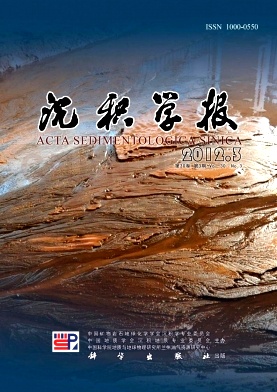An Approach to Get Gravel Roundness Data on Field Outcrops: Taking Permian Qixia Formation in Chaohu, Anhui Province as an example
- Publish Date: 2012-06-10
-
Key words:
- gravel roundness /
- field outcrops /
- measurement /
Abstract: Shape is the fundamental property of all objects, including sedimentary gravels. As one of the three elements of the shape, roundness of gravels can reflect their transportation history. Since it was brought up, researchers have paid close attention to it. However, the methods of defining gravel roundness in the field haven't made obvious progress. On one hand, the sedimentologists have not paid enough attention to the field outcrops, which causes the phenomenon that those methods are almost for threedimensional gravels and have no effect on the field outcrops, though there are various kinds of quantitative methods to work on gravel roundness. In the past, the terms to describe the roundness of gravel in the field are merely well rounded, rounded, subrounded, subangular, angular and very angular and some other qualitative descriptions. Furthermore, comparing the observed outlines of the gravels with visual comparator is also a way to describe the roundness which is confined in describing between qualitative and semiquantitative. On the other hand, quantifying the roundness of gravels in the field is quite difficult, for many outcrops can't be measured directly because of the topography, and the measuring is timeconsuming and field time is always limited. To get quantitative data of roundness of gravels, this paper proposes a new method, taking Permian Qixia Formation in Chaohu, Anhui Province for example. First, we take photos of conglomerates on field outcrops with a digital camera, and then deal these digital images with a variety of related computer software. The main steps including: determine the boundary between gravel and matrix, then outline the gravel; drawing the maximum inscribed circle of the contours and the inside circles of the corners on the counters, then obtaining the radius of curvature of the circles; putting the radius into the Wadell's (1932) formula and then we can know the value of roundness of the gravel. This method makes it possible to obtain the quantitative data of the roundness of gravel, which is more operable and efficient. What's more, we also use it to deal with the percentage composition of gravel and matrix. Therefore, our work not only provides new quantitative research methods and ideas for the roundness of gravel, but also is of significant meaning for describing the geometry characteristics of gravel. However, there are still many things for us to improve. For example, when we outline the gravels and determine the round corners, some subjective factors will be inevitably brought in. In this part, we need to do some new attempts, such as distinguishing boundary between gravel and matrix and obtaining more accurate corners radius using some sorts of graphical analysis software such as Arcgis.
| Citation: | An Approach to Get Gravel Roundness Data on Field Outcrops: Taking Permian Qixia Formation in Chaohu, Anhui Province as an example[J]. Acta Sedimentologica Sinica, 2012, 30(3): 522-529. |






 DownLoad:
DownLoad: